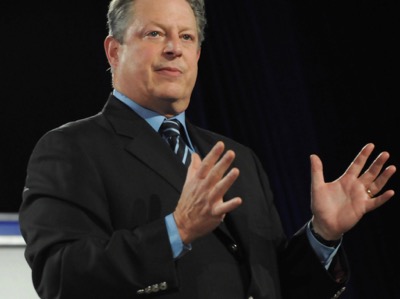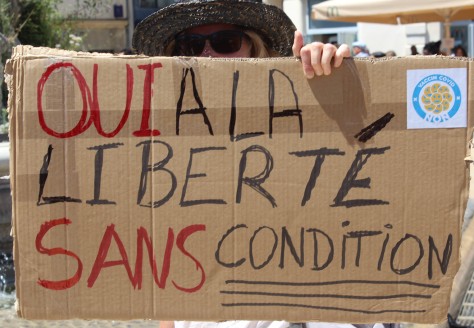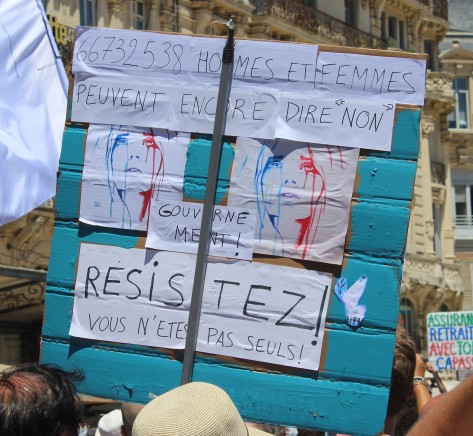
|
by Lee Camp Basic income has been tried successfully countless times. So why the hell isn’t the US government implementing it? This article was originally published by Scheerpost. Here’s how the world should operate in simple terms: A certain country or region or city or township or Hobbit hole tries something in order to help their society or group or hovel – if it works, other places then do it. If it doesn’t work, other places don’t do it. It’s like when you were a kid and you saw your brother slide down the banister and rack himself on the newel post – You then thought, “Maybe that activity is not for me.” But if he didn’t nail himself in the jewels, you probably thought, “I think I’ll try that.” That’s how the United States government should work, but it doesn’t. For-profit healthcare, corporate personhood, the drug war, funding terrorists overseas that we call “moderate rebels,” etc. – all of these things have been tried, they fu***n’ suck every time, and we keep doing them. The U.S. continually racks itself on the newel post all day long and then responds, “I think I’ll try that again.” But the reverse should be true also – if a city or country anywhere in the world tries something and it works great, we should do it. This brings me to Universal Basic Income: everybody receiving money from a government simply for being a citizen, no questions asked. It’s high time we try it in the US and see whether it works. Oh wait, I just remembered – it’s been tried countless times and worked every damn time. How do I know that? …Reading. As Rutger Bregman details in his book “Utopia For Realists,” UBI has been tried many times — in Canada, Alaska, Africa, the US, Europe, and more. Even backwards lawless lands like North Carolina have experimented with it. There was a study in Britain where 13 men who had lived on the streets for years were given £3,000 each (about $4,500 at the time). Did they use it for hundreds of pricey almond milk lattes, or giant bags of crack, or maybe just wad it up into balls and wipe themselves with them? Nope, turns out they didn’t do any of those things. Eighteen months after receiving the money, over half were no longer homeless, and all of them had improved their lives significantly. As Bregman noted, “Even The Economist had to conclude that ‘the most efficient way to spend money on the homeless might be to give it to them.’” No! We can’t possibly do that! We here in the US have to take the money meant to help the homeless and launder it through all kinds of plans and incentives and bureaucratic digestive tracts that result in one out of every 100 people in extreme poverty receiving a gift certificate for a free basket of breadsticks at Arby’s. In another program Bregman describes, everybody in a village in Kenya was given $500, about a year’s wages. Several months later, the village had been completely transformed. People had better jobs, sturdier home structures, and healthier kids. “In Namibia figures for malnutrition took a nosedive (from 42% to 10%), as did those for truancy (from 40% to nothing) and crime (down by 42%),” writes Bregman. So, basically there’s almost a silver bullet to ending poverty and decreasing crime. Well, we better avoid it like the plague. Let’s go back to giving homeless people a can of soup and a pair of mismatched socks. If they collect enough cans and socks, they can build a house out of them The point is basic income has been tested numerous times. By 2010, there were income transfer programs for 110 million families in 45 different countries. In North Carolina, in 2001 the Cherokee were getting $6,000 a year per family thanks to a casino they had built. When that started, for most of those families that money took them out of extreme poverty, and the Cherokee children saw drastic changes. Their crime rates, behavioral issues, and alcohol abuse went down significantly. The money literally changed their lives. (And sure, all casinos are based on drunk people spending money they don’t have on machines they don’t know are rigged in hopes of getting money they will never get. But you can’t get mad at the Cherokee because that’s also the basic definition of capitalism: Drunk people spending money we don’t have on machines we don’t know are rigged in hopes of getting money we’ll never get.) The University of Manchester summarized many UBI programs in poor African communities. They found, overall, the money was put to good use: Poverty decreased, and while the programs cost less than other so-called solutions, there were myriad long-term benefits that impacted health and safety. How shocking! The thing we know works seems to work! (Hopefully somebody can study this a little more and find out if it works.) Bregman then writes of NGO workers, “So why send over to Africa expensive white folks in SUVs when we can simply hand over their salaries to the poor?” Great point. At the very least, let’s give away the SUVs. The latest basic income “test” reported-on last month in Fast Company showed that it worked yet again in Hudson, NY. Despite all of these successful trials, people still argue, “We can’t have basic income because the poor will just use it for beer and cigarettes!” Well, first of all – So what? The world’s on fire. Beer and cigarettes sound like just what the doctor ordered. In fact, I think we’re at the point when we can call alcohol and tobacco survival foods. (I am a longtime supporter of Universal Basic Beer and Cigarettes.) But perhaps more importantly, as Bregman notes, “A major study by the World Bankdemonstrated that in 82% of all researched cases in Africa, Latin America, and Asia, alcohol and tobacco consumption actually declined.” Declined? Well, then I have to say these poor people have their priorities completely wrong. Another major argument against UBI is, “It’s not fair. Giving people money for doing nothing simply isn’t fair.” My response to that is twofold. First, it actually is fair because the money would go to literally everyone. Hence the word “universal” in the name. (It would be weird to have something called “Universal Basic Income” that only went to a vintage clothing store clerk named Stanley.) Secondly, who told you fairness mattered in life? Who told you fairness has anything to do with our stupid world? There’s no fairness. In the first three seconds you come out of the womb, life is not fair. You’re covered in blood and mucus, some doctor slaps you on the ass, and you’re told your name is something you’ve never even heard before! Completely unfair. You’re just lying there going, “Chet? My name’s CHET?!” Some people are born rich as sh*t. Some people are born poor as sh*t. Some people are born hot as sh*t. (I mean, not as a baby but… later. You get the point.) Some people are born in wealthy areas with safe streets, good schools and clean water. Some people are born in poverty with crime-ridden streets, terrible schools, and water that has a crispy film on the top like a cancerous crème brulée. In our society, on average, men get paid more than women, white people get paid more than Black people and Native people, and most everyone gets paid more than ugly people. (I’m not even kidding – ugly people earn up to 15% less per hour in the workplace.) Society. Is. Not. Fair. So if I say that universal basic income would solve several of society’s problems and someone responds that UBI’s not fair, they’re being completely illogical. It’s like if I said a law against killing endangered species would save the exotic birds, and you retort, “But we can’t do that because it’s not purple.”
|
Cura Annonae (“care of Annona”) was the term used in ancient Rome, in honour of their goddess Annona, to describe the import and distribution of grain to the residents of the cities of Rome and, after its foundation, Constantinople. Rome imported most of the grain consumed by its population, estimated to number one million people by the second century AD. An important part of this was the grain dole or corn dole,[a] a government program which gave out free or subsidized grain, and later bread, to the poorest residents of the city of Rome. The dole was given to about 200,000 people, and is an early and long-lasting example of a social safety net. A regular and predictable supply of grain and the grain dole were part of the Roman leadership’s strategy of maintaining tranquility among a restive urban population by providing them with what the poet Juvenal sarcastically called “bread and circuses“. In 22 AD, the emperor Tiberius said that the Cura Annonae if neglected would be “the utter ruin of the state”.[1] The most important sources of the grain, mostly durum wheat, were Roman Egypt, North Africa (21st century Libya, Tunisia, Algeria, and Morocco), and Sicily. The logistics of moving the grain by sea from those places to Rome required many hundreds of ships, some very large, and an extensive system for collecting the grain and distributing it inside Rome itself. The archaeological records of the grain trade are sparse, due to the perishability of grain which has made its detection difficult for archaeologists.[2] It is unknown when the Cura Annonae ended. Some form of it may have persisted as late as the 6th century for Rome, but far less grain was shipped compared to earlier periods; in Constantinople, a reduced form of it lasted as late as the 7th century. Tiberius was correct that the Cura Annonae was tied to the health of the city of Rome: the population of the city of Rome declined precipitously during the last years of the Western Roman Empire. After Rome’s decline, no city in Europe would assemble the transportation network required to feed a million inhabitants until the 19th century. History of the grain doleThe city of Rome grew rapidly in the centuries of the Roman Republic and Empire, reaching a population approaching one million in the second century AD.[3] In the early centuries of the Republic (509-287 BC), the Roman government intervened sporadically to distribute free or subsidized grain to its population. Regular distribution began in 123 BC with a grain law proposed by Gaius Gracchus and approved by the Roman popular assembly. Adult male citizens (over 14 years of age) of Rome were entitled to buy at a below-market price five modii, about 33 kilograms (73 lb), of grain monthly. Approximately 40,000 adult males were eligible for the grain. In 62 and 58 BC the number of Romans eligible for grain was expanded and grain became free to its recipients. The numbers of those receiving free or subsidized grain expanded to an estimated 320,000 before being reduced to 150,000 by Julius Caesar and then set at 200,000 by Augustus Caesar, a number that remained more or less stable until near the end of the Western Roman Empire.[4][5] In the 3rd century AD, the dole of grain was replaced by bread, probably during the reign of Septimius Severus (193-211 AD). Severus also began providing olive oil to residents of Rome, and later the emperor Aurelian (270-275) ordered the distribution of wineand pork.[6] The doles of bread, olive oil, wine, and pork apparently continued until near the end of the Western Roman Empire in 476 AD, although the decline in the population of the city of Rome reduced the quantities of food required.[7] The dole in the early Roman Empire is estimated to account for 15 to 33 percent of the total grain imported and consumed in Rome.[8] SupplyBy the late 200s BC, grain was being shipped to the city of Rome from Sicily and Sardinia. In the first century BC, the three major sources of wheat were Sardinia, Sicily, and North Africa, i.e. the region centered on the ancient city of Carthage, present day Tunisia. With the incorporation of Egypt into the Roman empire and the rule of the emperor Augustus (27 BC – AD 14), Egypt became the main source of supply of grain for Rome.[9] By the 70s, the historian Josephus was claiming that Africa fed Rome for eight months of the year and Egypt only four. Although that statement may ignore grain from Sicily, and overestimate the importance of Africa, there is little doubt among historians that Africa and Egypt were the most important sources of grain for Rome.[10] To help ensure that the grain supply would be adequate for Rome, in the second century BC, Gracchus settled 6,000 colonists near Carthage, giving them about 25 hectares (62 acres) each to grow grain.[11] Grain made into bread was, by far, the most important element in the Roman diet. Several scholars have attempted to compute the total amount of grain needed to supply the city of Rome. Rickman estimated that Rome needed 40 million modii (272,000 tonnes) of grain per year to feed its population.[12] Erdkamp estimated that the amount needed would be at least 150,000 tonnes, calculating that each resident of the city consumed 200 kilograms (440 lb) of grain per year.[13] The total population of Rome assumed in calculating these estimates was between 750,000 and one million people. David Mattingly and Gregory Aldrete[14] estimated the amount of imported grain at 237,000 tonnes for 1 million inhabitants;[15] This amount of grain would provide 2,326 calories daily per person not including other foods such as meats, seafood, fruit, legumes, vegetable and dairy. The Historia Augusta, states that Severus left 27 million modii in storage, enough for 800,000 inhabitants at 225 kilograms (496 lb) of bread per person per annum.[16] Read more here: Cura Annonae |

















































